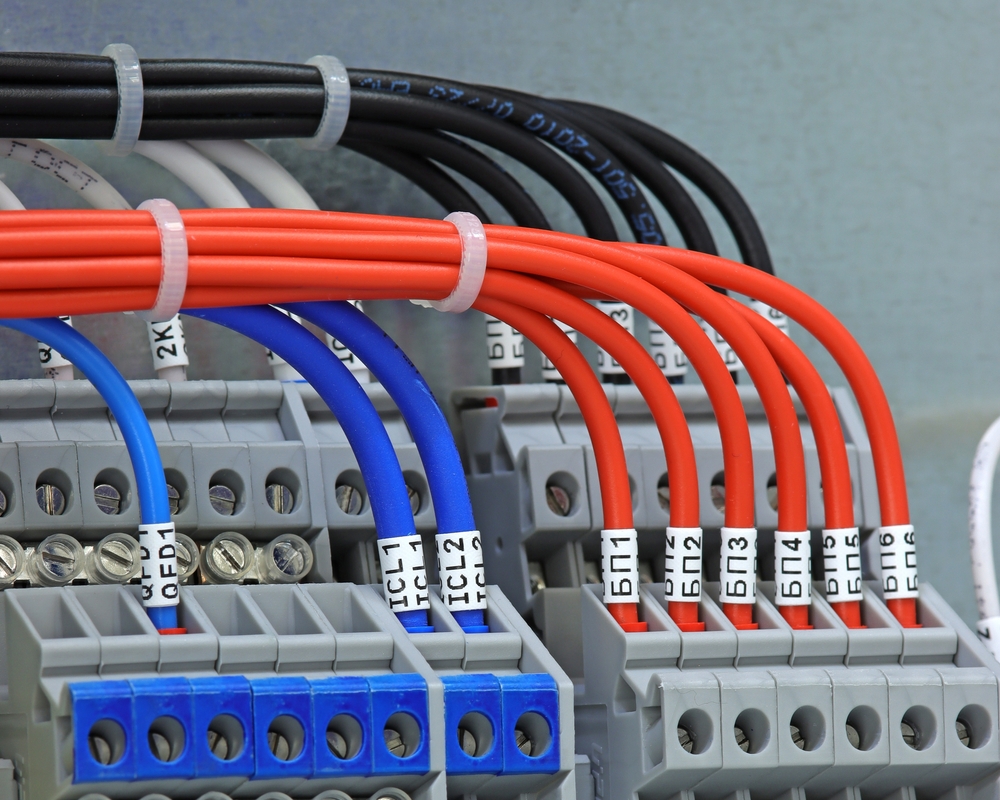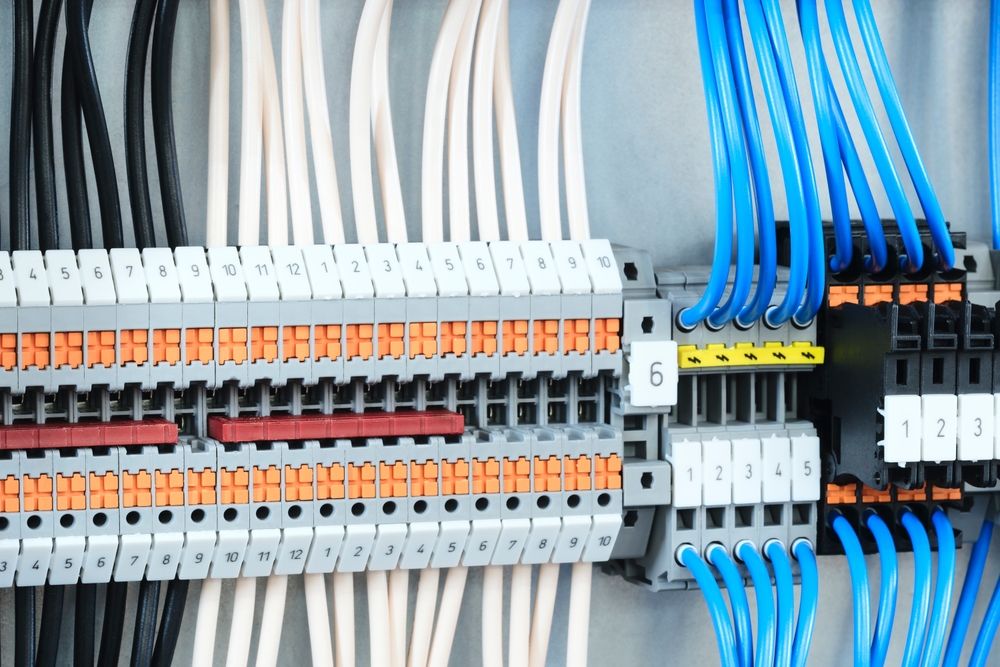When setting up or upgrading your network, choosing the right type of Ethernet cable is crucial. Many people get confused between CAT5e and CAT6 cables, and while they might look similar, they perform very differently. In this guide, Adam Taylor Electrical breaks down the key differences between CAT5e vs CAT6 cables, helping you make an informed decision based on your speed requirements and network needs.

Whether you’re setting up a small home office or installing a large-scale network, understanding the capabilities of these cables will ensure optimal performance. Let’s dive into the key differences in speed, performance, and use cases for both CAT5e and CAT6 cables.
CAT5e vs CAT6 Cable: What’s the Difference?
Both CAT5e and CAT6 cables are used for Ethernet connections, but their capabilities differ significantly, especially when it comes to speed and distance.
- CAT5e (Category 5 Enhanced) is an improved version of the older CAT5 standard, designed to support faster speeds and greater frequencies. It can transmit data up to 1 gigabit per second (Gbps) at 100 meters.
- CAT6 (Category 6), on the other hand, supports higher speeds and frequencies. It is capable of supporting 10 gigabit per second (Gbps) speeds at up to 55 meters and performs better in environments with high interference.
In simple terms, CAT6 cables outperform CAT5e cables in terms of speed and capacity, but CAT5e is often enough for basic residential setups and smaller networks.
Speed Comparison: CAT5e vs CAT6
One of the primary factors in choosing between CAT5e and CAT6 cables is speed. Here’s a breakdown of the speed capabilities:
- CAT5e Cable Speed:
- Supports up to 1 Gbps over 100 meters.
- Ideal for standard home networks, such as streaming and browsing.
- CAT6 Cable Speed:
- Supports up to 10 Gbps over 55 meters.
- Perfect for high-speed connections, such as HD video streaming, online gaming, or large data transfers.
If you need higher bandwidth for tasks like video conferencing or large file transfers, CAT6 cables are the way to go.
Performance: Interference & Signal Quality
In addition to speed, performance is another key difference between CAT5e and CAT6 cables.
- CAT5e: While CAT5e cables offer better resistance to interference compared to older CAT5, they still fall short when it comes to handling higher frequencies and environments with a lot of electrical interference. These cables are fine for residential use where network traffic is moderate.
- CAT6: CAT6 cables are built with tighter twists and enhanced insulation to reduce crosstalk and interference. This makes CAT6 a better option for commercial environments or areas with significant electromagnetic interference (EMI), such as factories or large office buildings.
If you need a more reliable signal over long distances, CAT6 cables are definitely the better choice.
Use Cases for CAT5e vs CAT6
Knowing which cable is right for your setup depends on your specific use cases. Here’s a breakdown of where each cable type excels:
- CAT5e:
- Home networks: Great for general browsing, streaming, and light internet use.
- Small businesses: Suitable for network setups that don’t require ultra-fast speeds or high bandwidth.
- CAT6:
- Offices: Perfect for businesses that need fast and reliable connections to handle large data streams.
- Gaming: Essential for low-latency gaming setups that require high-speed data transfer.
- Video Streaming: For households or businesses streaming 4K or HD content.
For Perth residents looking to upgrade their home or business network, Adam Taylor Electrical can help you select the best cable type to match your needs.
What About CAT5e vs CAT6e?
Some people may also come across CAT6e cables, which are sometimes referred to as an enhanced version of CAT6. While CAT6e cables support even higher speeds and performance (up to 10 Gbps at 100 meters), they are not as commonly used in residential setups. If you’re working with high-end networking equipment or in a data-heavy environment, CAT6e could be a better investment.
Why Choose Adam Taylor Electrical in Perth for Your Cabling Needs?
If you’re unsure which type of Ethernet cable to use or need help installing CAT5e or CAT6 cables in your Perth home or office, look no further than Adam Taylor Electrical. Our expert team can guide you through the selection process and ensure your cables are installed correctly for optimal performance.
We also offer a full range of electrical services, including:
- Network and data cabling installation
- Electrical troubleshooting and maintenance
- Home and office wiring upgrades
Contact Adam Taylor Electrical today to discuss your cabling needs and get a quote for your next project.
Conclusion: CAT5e vs CAT6 – Which One Do You Need?
When choosing between CAT5e and CAT6 cables, it ultimately comes down to your network speed and performance needs. If you’re looking for a cost-effective solution for basic internet use, CAT5e may be enough. However, for higher speeds, better performance, and future-proofing your network, CAT6 cables are the best choice.
For Perth residents, Adam Taylor Electrical offers expert advice and cabling services to ensure your home or office network runs smoothly. Contact us today for professional guidance and installation!
FAQs
1. What’s the difference between CAT5e and CAT6 cables?
CAT6 cables provide faster speeds (up to 10 Gbps), handle higher frequencies, and offer better resistance to interference than CAT5e cables, making them ideal for high-performance networks.
2. When should I use CAT6 cables?
Use CAT6 cables for environments that require high-speed data transfers, such as businesses, gaming, or HD video streaming setups, especially in areas with high interference.
3. Can I use CAT5e for a high-speed internet connection?
CAT5e cables support speeds up to 1 Gbps, which is sufficient for most home internet needs, but for faster speeds (e.g., 10 Gbps) or larger networks, CAT6 cables are recommended.
4. What is the maximum distance for CAT6 cables?
CAT6 cables can transmit data at 10 Gbps for up to 55 meters. For longer distances (up to 100 meters), CAT5e cables will suffice.
5. Do I need to upgrade to CAT6?
If you’re setting up a new high-performance network or anticipating future upgrades, CAT6 cables are a good investment. For basic internet and home networking needs, CAT5e is still a solid choice.

